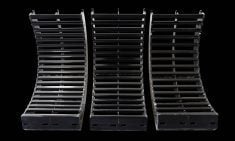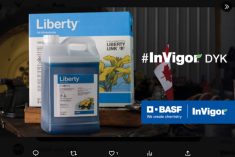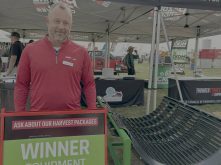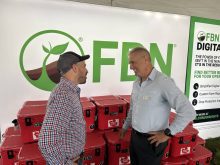Glacier FarmMedia – About 30 weed seed destructors were used last fall on farms across Canada, says an Agriculture Canada scientist.
That isn’t a lot, as the country has some 50,000 grain farms that buy about 2,000 new combines every year.
But adoption of the destructors, which pulverize weed seeds before they exit the combine, is slowly gaining momentum.
Read Also

Seeding Indigenous agricultural prosperity
National Circle for Indigenous Agriculture and Food says Indigenous agricultural success needs strong relationships.
“The first mills that we’re aware of (in Canada) were adopted on farm in 2018. To go from none in 2017 to 30 in 2023, to me that shows (some) producers are seeing a benefit from it,” said Breanne Tidemann, an Agriculture Canada weed scientist in Alberta.
“A lot of the mills that I’m aware of came on board from 2022 and later.”
Why it matters: Weed seed destructors are a powerful tool in the fight against herbicide-resistant weeds.
Weed seed destructors are popular with Australian farmers. In 2022 more than 1,100 new combines were sold in Australia, according to the Tractor and Machinery Association of Australia. Of those new combines, 25 to 30 per cent were equipped with weed seed destructors.
Many Australian farmers were essentially forced to adopt the technology because of herbicide-resistant weeds.
Using a combine equipped with a destructor can reduce the number of viable weed seeds in the chaff, thus lowering the number that can germinate in the following year.
The adoption rate is much lower in Canada, but worries about herbicide-resistant weeds and the cost of controlling them has convinced a few farmers.
“Most of our (Canadian) sales are coming from the Alberta-Saskatchewan border area, where the kochia problem is really bad and getting worse,” said Trevor Thiessen, president of Redekop Manufacturing, in 2023. Redekop, located in Saskatoon, is one of several companies that manufacture weed seed destructors.
The units can be retro-fitted onto used combines or installed on new machines, but they cost about $100,000, which slows adoption.
Another factor is evidence. More research is needed to demonstrate the agronomic benefits of the technology.
“The longest term studies that we’ve done are three years, which are a little on the short side,” Tidemann said.
To gather more information on potential benefits, she surveyed about 10 Canadian farmers who collectively use 18 mills. Some producers see a decline in weed populations and herbicide costs.
“I had three (farmers) that felt they had seen reductions in their weed densities since adopting the mill. On average, about a 60 per cent reduction in weed densities was their estimate,” Tidemann said.
“Two have been able to reduce herbicide applications by 25 and 30 per cent.”
Those farmers have used the mills for several years; one since 2018 and the other two since 2020.
Most of the farmers in Tidemann’s survey started using destructors in 2022. It’s difficult to notice the benefits of a new practice after only a year or two.
In the U.S., a small number of farmers are experimenting with weed seed destructors. Adoption rates are low, even though herbicide resistance is a widespread problem there.
“They’re also sitting at 25-30 mills primarily in Washington (State),” Tidemann said. “They’re really not far ahead of us….”
However, American research shows encouraging results. Scientists from Virginia Tech have tested the Redekop Seed Control Unit on soybeans and wheat. They found weed seed kill rates ranging from 93 to 99 percent in wheat chaff and over 98.5 per cent in soybean chaff.
The researchers determined that of all the weed seeds entering the combine, less than five percent returns to the field.
– Robert Arnason is a reporter for The Western Producer.
















